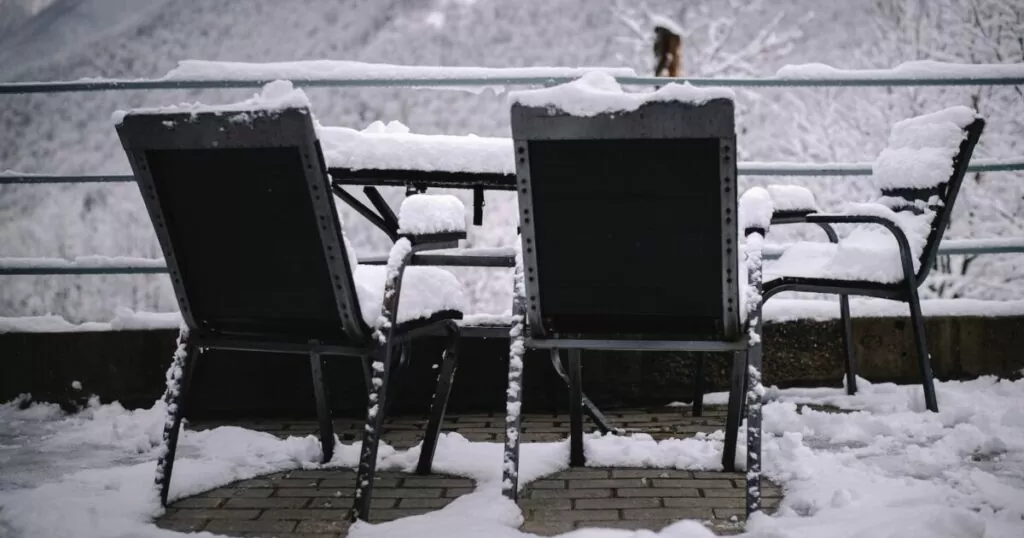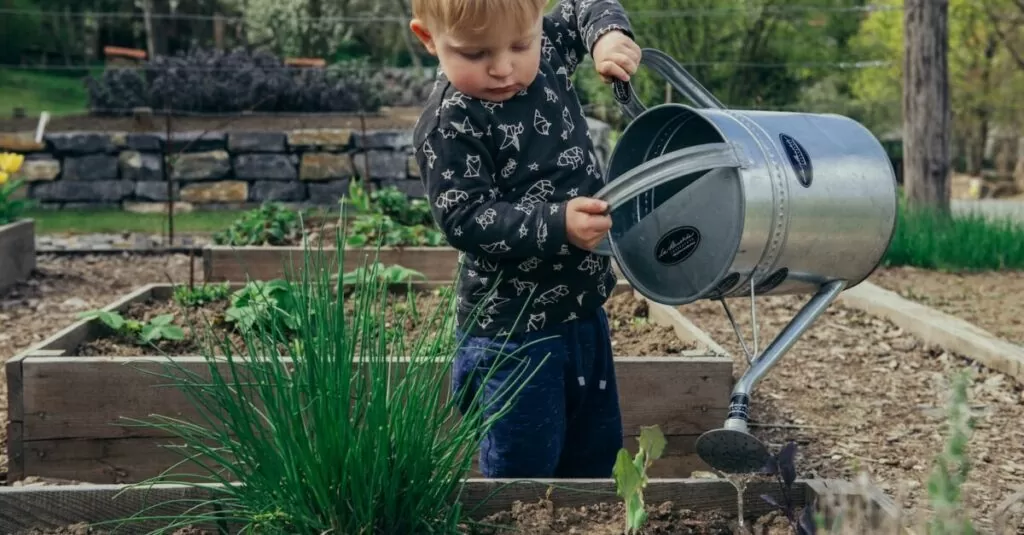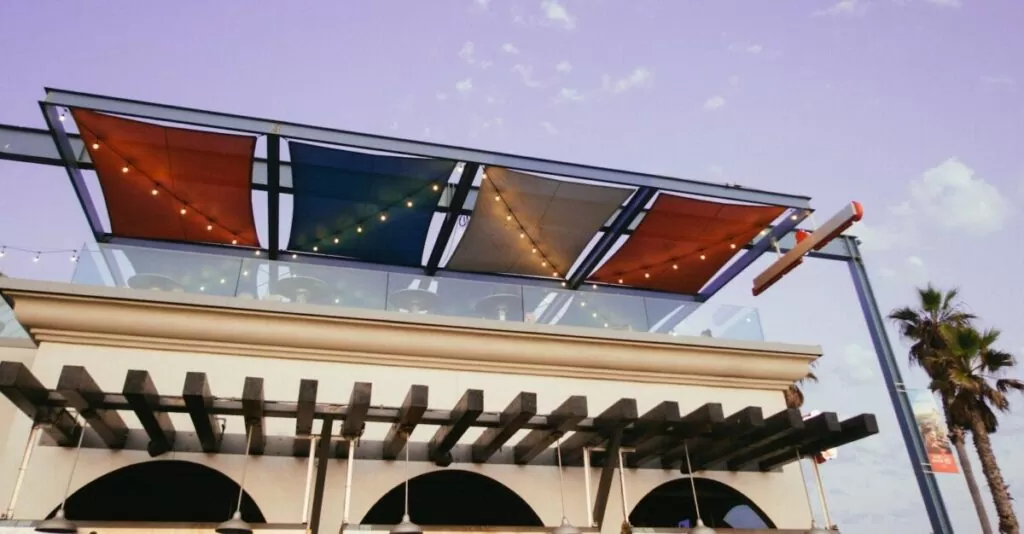Winter weather can wreak havoc in many areas of the home. Aside from making you crank up the heat and bundle up with extra layers, cold weather can put your outdoor furniture at risk of freeze damage. Areas experiencing below freezing temperatures may be subject to blistering cold winds that can harm your patio furniture.
Freeze damage can cause moisture to freeze inside of furniture and cause frames to crack. When it rains, moisture accumulates in the frame of your patio furniture and will eventually form into water. As anyone might suspect, water can damage furniture and prove to have detrimental effects on wood.
Anybody care for dinner? Snow can cause freeze damage!
Salt Damage, Mold, & Mildew
Freezing temperatures can also lead to salt-damage. If you live by the ocean or by a salt water lake, these elements can evaporate into the surrounding air and find a home inside of your frames. Salt water eats away metal and will cause corrode frames. Try placing patio furniture in a place where they will get the most exposure to the sun. This will help dry out your furniture.
Another common problem associated with freeze damage is mold and mildew. These cultures tend to grow in areas that are dirty and moist, making outdoor furniture an ideal breeding ground. To prevent mold and mildew, regular cleaning should be undertaken to keep dirt from building up. Mildew creates stains that can be a pain to remove so be sure to make this a monthly chore. You can remove mold and mildew stains by using a solution of ammonia and soapy water. Be sure to rinse thoroughly and dry immediately after scrubbing.
Aluminum Frames
Most aluminum frames have holes that are designed to help drain water. In theory, this will allow the inside of frames to air out, however, moisture can also enter in through these “weeping holes.” To solve this, place your patio furniture in a position that allows water to easily flow out using the force of gravity to your advantage. These weeping holes are typically pre-drilled to allow unobstructed draining in the normal upright position. For this reason, you should avoid storing outdoor furniture upside down.
To keep your aluminum furniture in tip top condition, give frames a good scrub down with some detergent and warm water. This will prevent growth of mold and mildew. Although this is not common in aluminum furniture, freezing conditions can cause abnormal wear on furniture that is left outdoors.
The 3 Piece Iris Bistro Set is made out of cast aluminum. More info.Wood Furniture
Wood has a density that leads it to expand and contract on a normal basis. This is especially common during rainfall or snow. Rain and snow will seep into small cracks and fill the wood with moisture. Aside from mold and mildew, this can also lead your wood furnishings to crack or break.
If temperatures are nearing the freezing point of 32 degrees Fahrenheit, water will freeze. When water freezes, it will expand; this is not the best thing for your furniture. This is sure to cause cracks in your wood patio furniture, possibly making seating unstable and/or dangerous to sit on. The best solution is to bring wood furniture inside to avoid any serious damage.
Teak and stainless steel are extremely durable and create a great combination for outdoor furnishing. Willow Dining Set pictured above.Wrought Iron Frames
Next to steel, wrought iron frames deliver the highest level of durability. High density levels make wrought iron frames great for the outdoors because they cannot be blown around by swift wind gusts. In most cases, you can simply move wrought iron furniture to a safe location. You can always use furniture covers to keep any snow, rain, or falling tree limbs from resting on your outdoor furniture. Cushion storage boxes have also been a popular way to tuck away seating neatly without occupying excessive space.
Synthetic Wicker
Synthetic Wicker materials fare very well in harsh conditions. That is why they have been highly recommended. The durability of High Density Polyethylene (HDPE) Wicker is unmatched and it’s aesthetic appeal is equally appealing.
For the most part, you don’t have to do anything special to protect synthetic wicker from freeze damage. Simply continue wiping down your wicker furniture with a damp cloth and vacuuming every so often. If you’re feeling up to it, you can wash it with warm water and light detergent to remove any grime that may have accumulated over the years.
The Urbana 3 Piece Eclipse Sectional. More info.More Maintenance Tips:
1. How to Protect Outdoor Furniture from Snow and Winter Damage
2. How to Clean and Care for Resin Wicker Furniture
3. How to Keep Outdoor Furniture from Blowing Away
4. Bugs You Need to Watch for During the Winter
About this Post
Cheryl Khan is a graduate of UCSD who now lives in San Diego, CA. She loves visiting the beach, watching Fourth of July Fireworks at Presidio Park and catching movies and Edwards Cinemas. You can contact her by sending her a message on Google+ or sending her a tweet @SuperInteriors!










